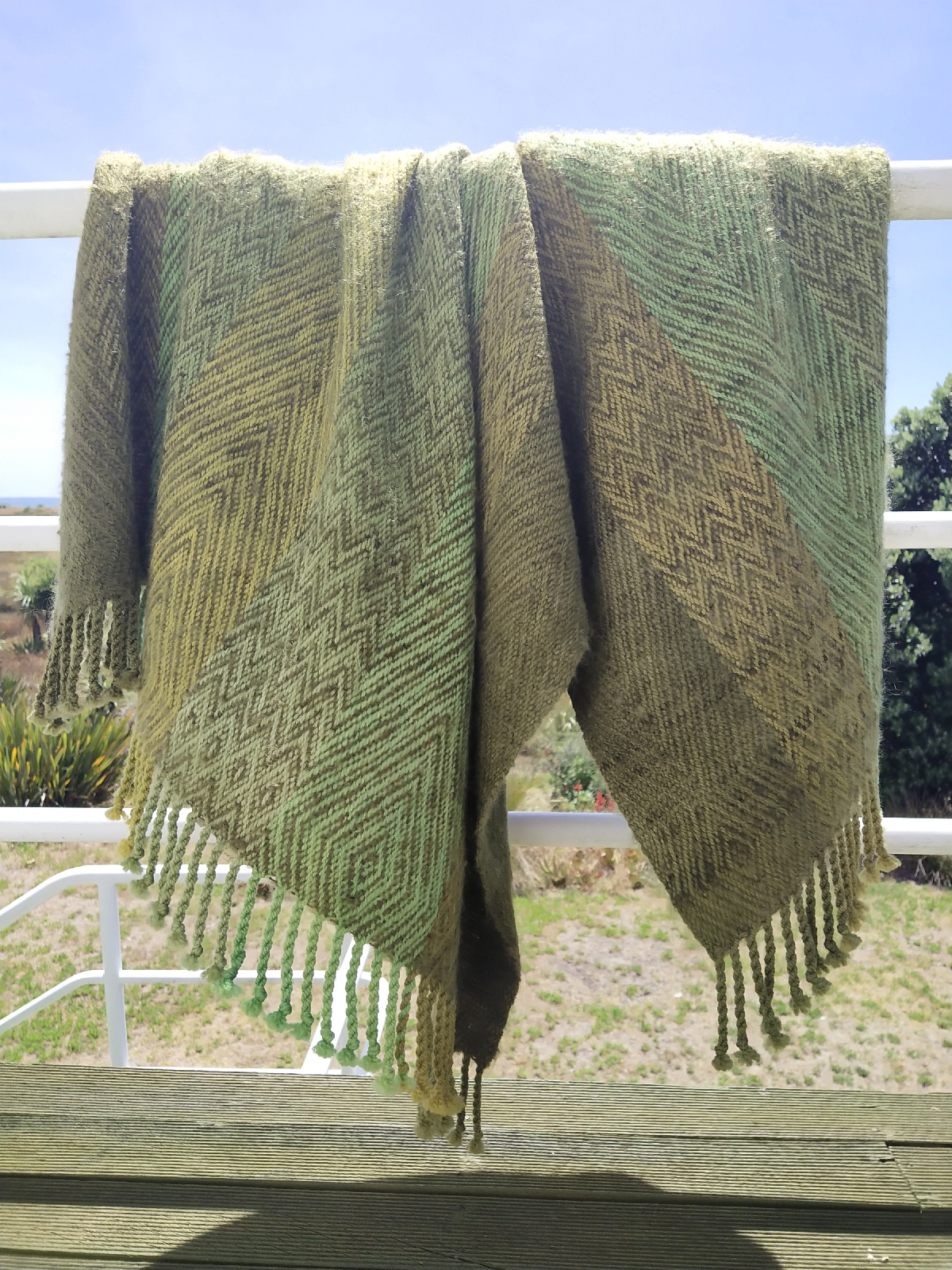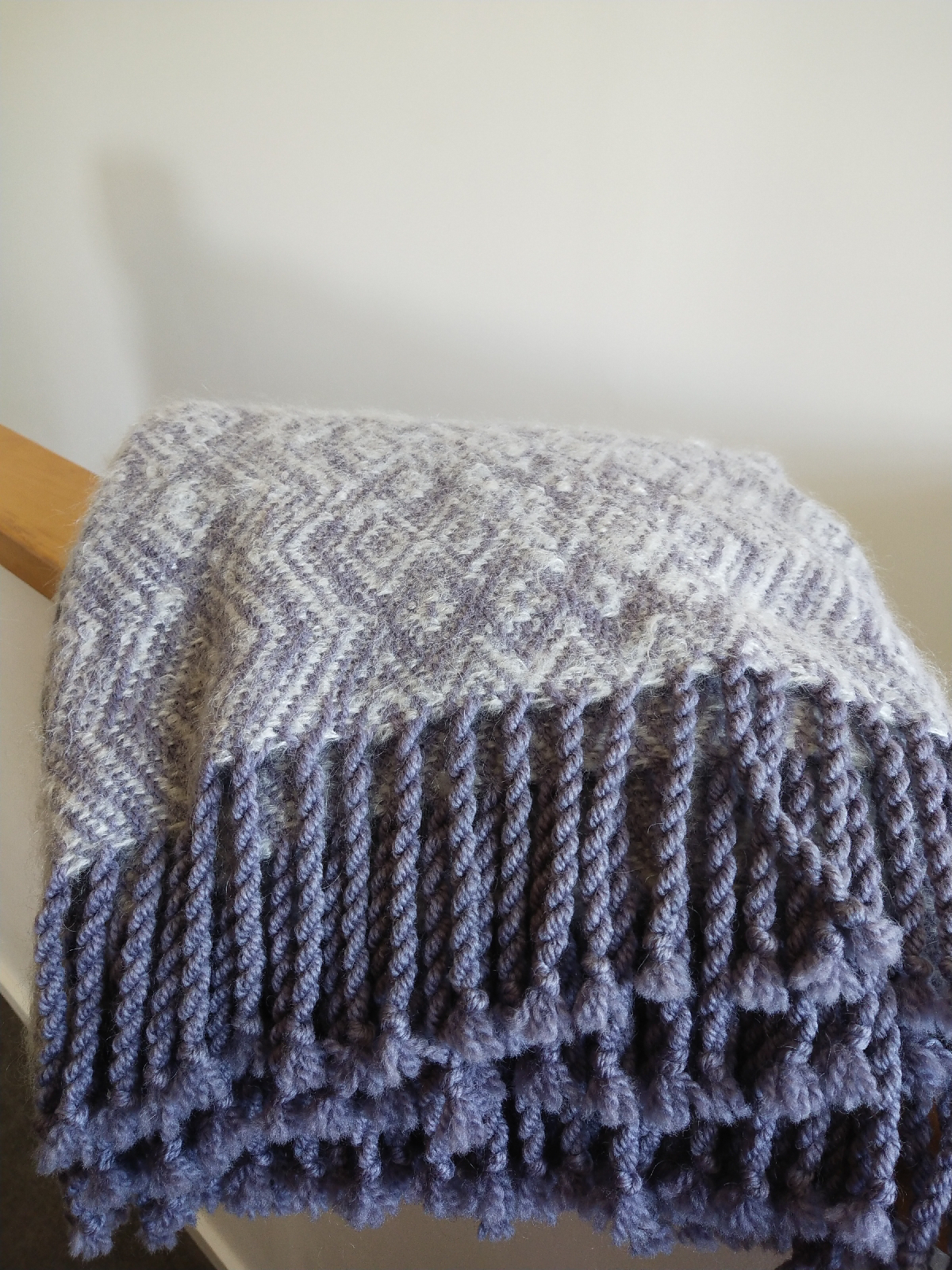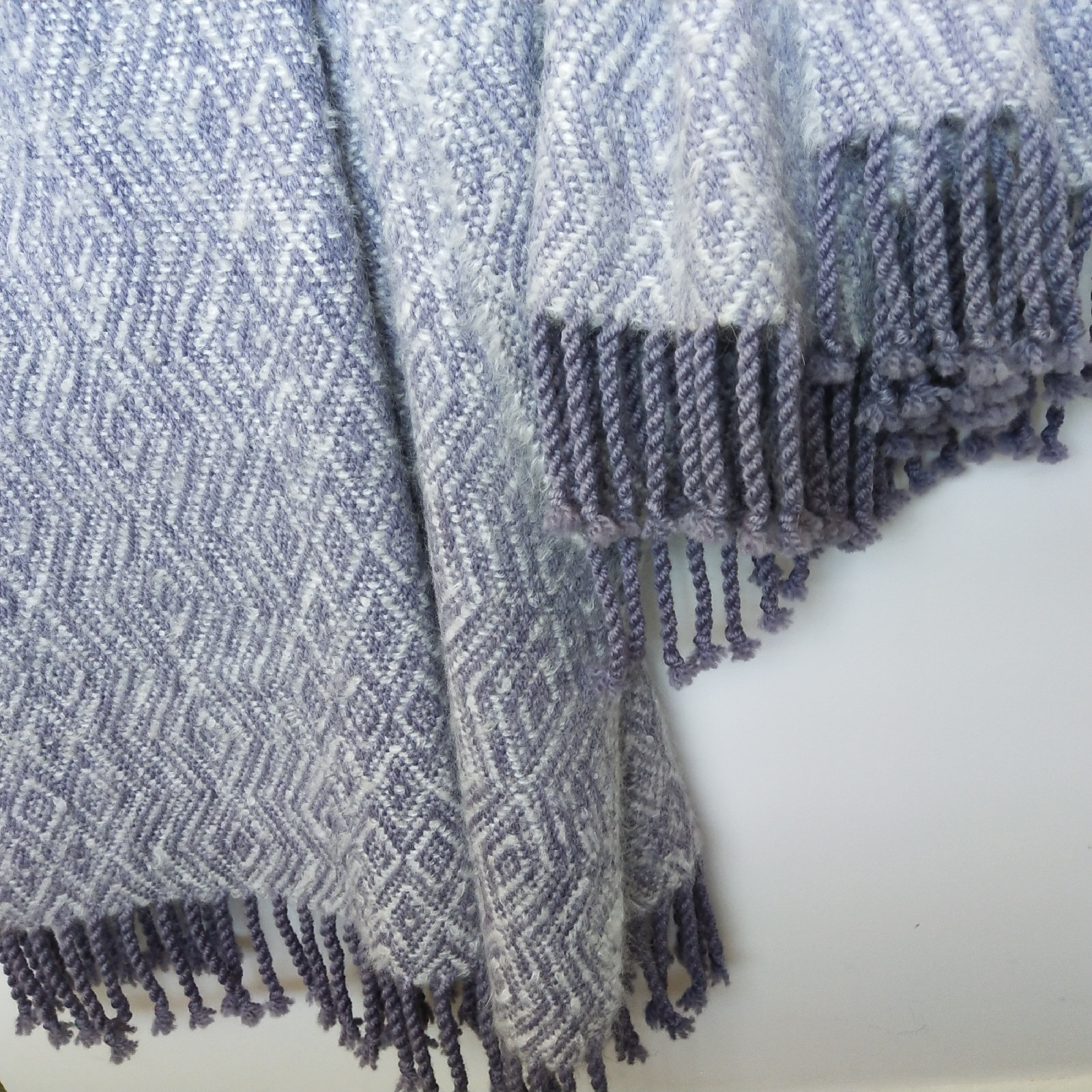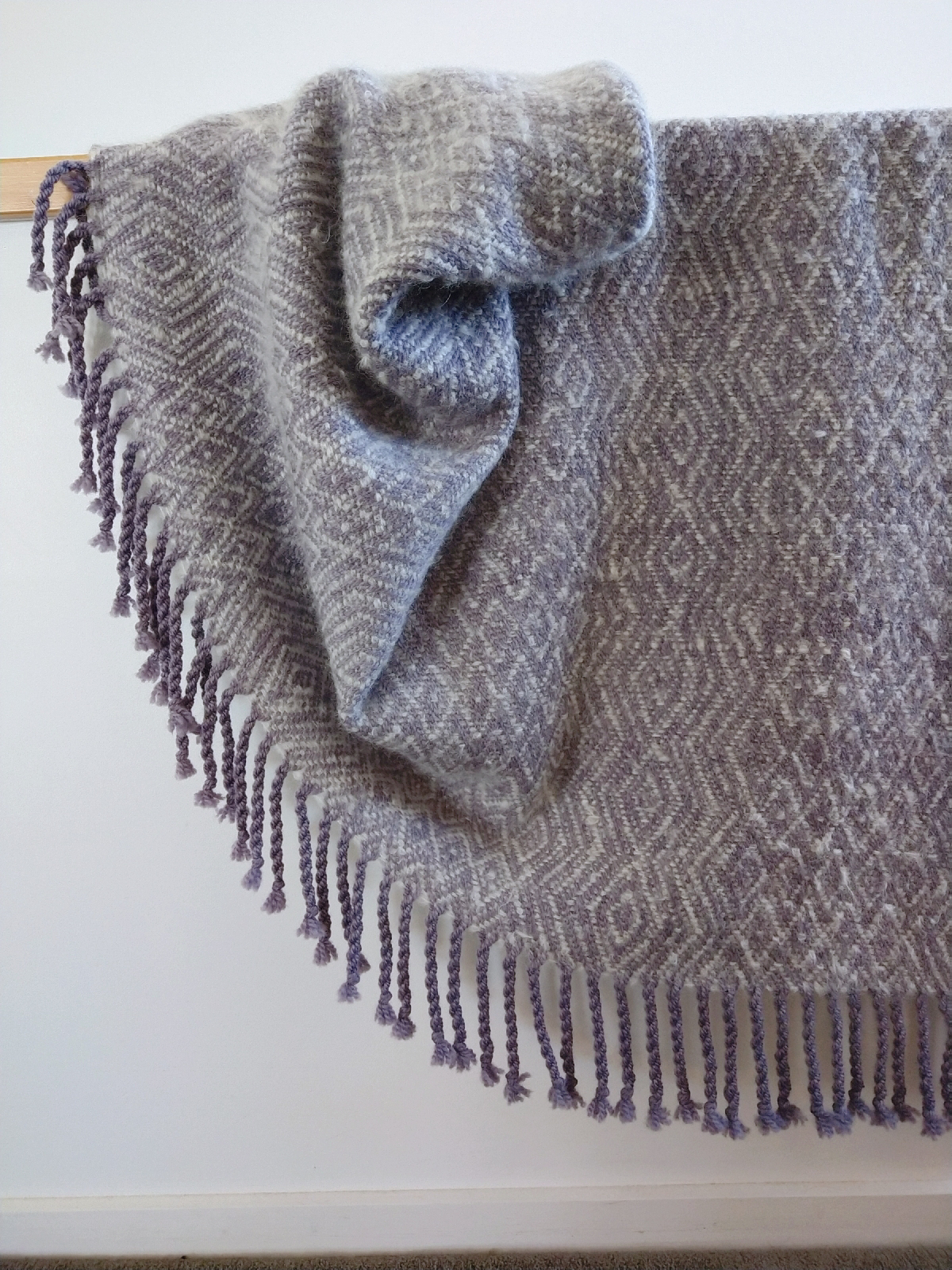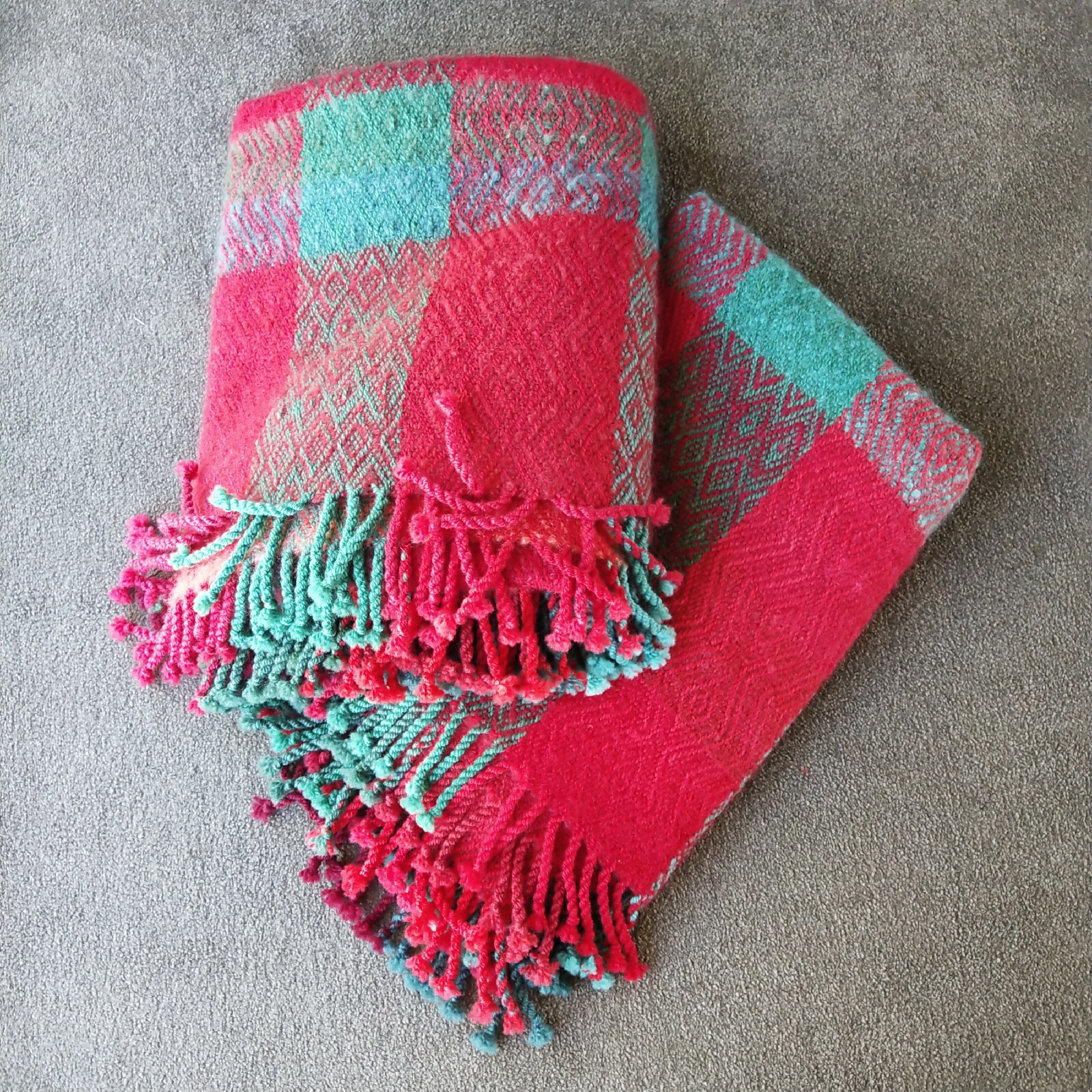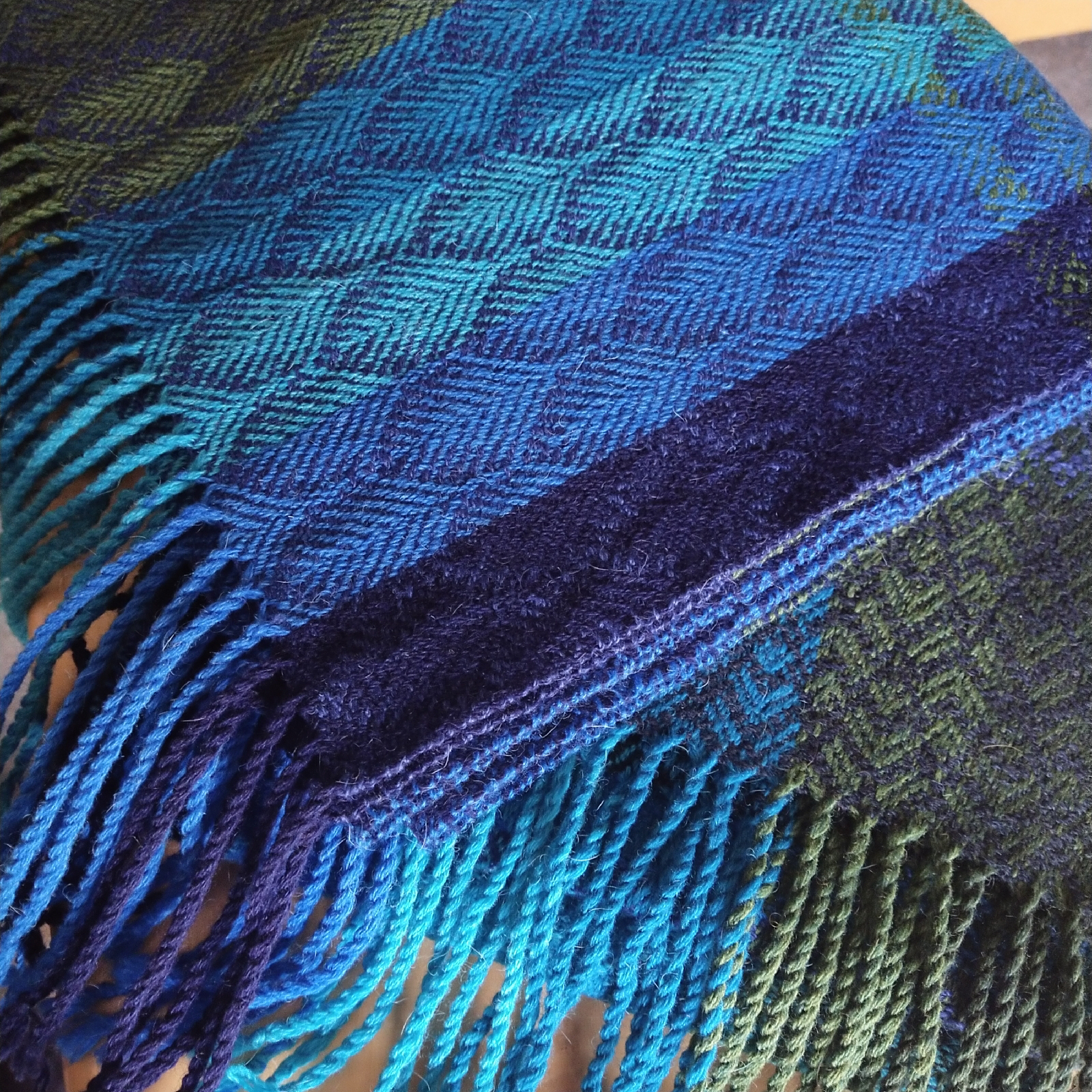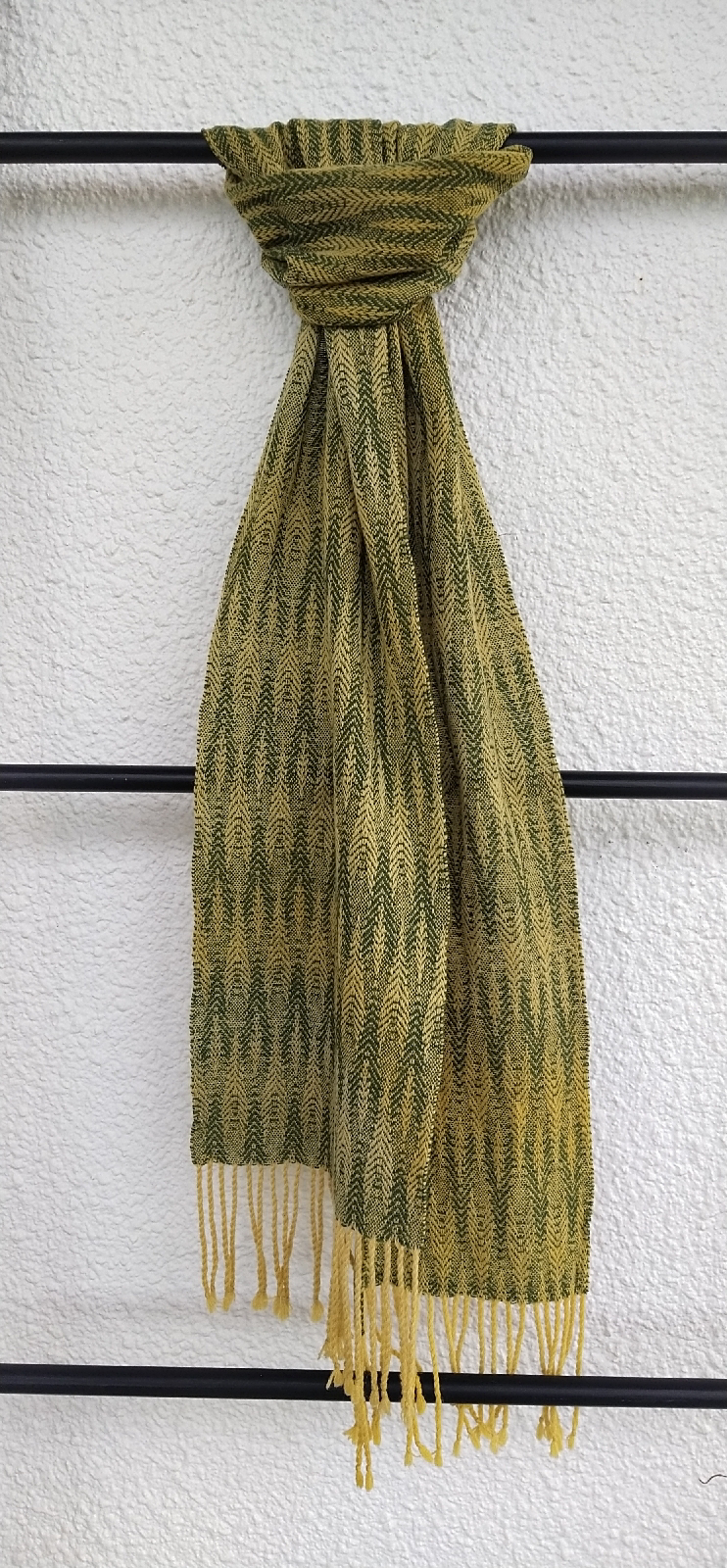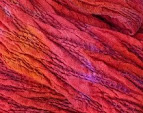After the mammoth effort of making 9 Kingfisher blankets I changed direction, and looms, and went for scarves.
I think I chose a point twill threading and changed tieups and treadling. I can't look it up as my PC died and, of course, I didn't back anything up. Hopefully I can retrieve my favourite patterns by putting the hard drive in hubby's computer. I digress.
These gorgeous blue scarves represent the Takahe, a flightless native bird of the rail family. In October 2023 there were just 500 of these fat, short legged big footed birds alive.
Next up I chose Kowhai, a native of New Zealand and I just learnt it is regarded as our unofficial national flower. The bright yellow to golden blooms are a welcome sight in spring
Kereru, or New Zealand pigeon, is a quite large bird with a white breast and iridescent green to blue plumage. Kereru pairs are monogamous, breeding over successive seasons and remaining together when not breeding.
The kiwi is a unique bird which cannot fly, has loose, hair-like feathers, strong legs and no tail. It has nostrils at the end of its beak and whiskers, a bit like a cat. The kiwi is the national icon of New Zealand and a symbol for the uniqueness of NZ wildlife and the value of our natural heritage. Having said that they are related to emus and cassowaries of Australia.
The Kakapo, sometimes called the owl-faced parrot, is a species of large, nocturnal, ground dwelling flightless parrot. They have a waddling walk and though they can't fly they can climb well using a kind of controlled plummet to get back to ground level. The parrot is critically endangered with only about 244 Kakapo alive today.




And that takes us to August 2024 when Peter and I went to Bribie Island, Queensland, Australia to warm our butts and holiday.

